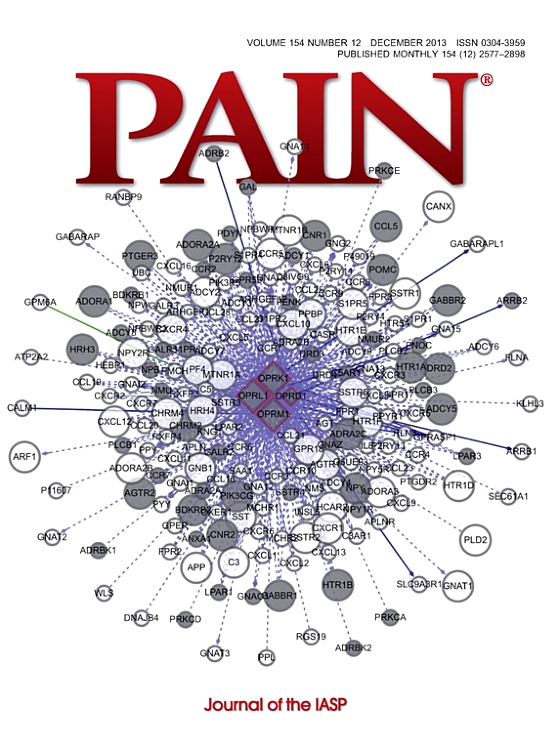Assessing the association between child maltreatment and chronic pain: a cross-sectional co-twin control study.
IF 5.5
1区 医学
Q1 ANESTHESIOLOGY
引用次数: 0
Abstract
Although associations exist between child maltreatment (CM) and multiple chronic painful conditions, it remains unclear to what extent associations might be attributable to unmeasured confounding. We leveraged the co-twin control approach, which rules out genetic and shared environmental confounding by design, with cross-sectional, national Swedish data from the Study of Twin Adults: Genes and Environment (N = 25,418; Mage = 33.2; SDage = 7.7; 55.7% female) to assess associations between the number of self-reported experiences of CM (ie, experiencing emotional or physical abuse/neglect, sexual abuse, or witnessing family violence before age 18 years) and self-reported endorsement of criteria for chronic widespread pain (CWP), lower back pain (LBP), and irritable bowel syndrome (IBS). In negative binomial generalized estimating equation models adjusting for age and sex at birth, a one-unit increase in CM counts was associated with 37%, 18%, and 34% more endorsement of CWP, LBP, and IBS criteria, respectively (CWP-adjusted incidence rate ratio [aIRR] = 1.37 [95% confidence interval: 1.32-1.42]; LBP aIRR = 1.18 [1.16-1.21]; IBS aIRR = 1.34 [1.29-1.39]). In comparisons of differentially exposed co-twins, associations attenuated only slightly for CWP (aIRR, 1.21 [1.12-1.31]), LBP (aIRR, 1.15 [1.09-1.21]), and IBS (aIRR, 1.24 [1.14-1.35]). Analyses restricted to monozygotic twins to rule out virtually all genetic confounding produced similar results (CWP aIRR, 1.20 [1.05-1.38]; LBP aIRR, 1.10 [1.01-1.21]; IBS aIRR, 1.14 [1.00-1.30]). Altogether, the results suggest that associations between CM and CWP, LBP, and IBS are not entirely attributable to genetic or shared environmental confounding.评估儿童虐待与慢性疼痛之间的关系:一项横断面双胎对照研究。
尽管儿童虐待(CM)与多种慢性疼痛状况之间存在关联,但尚不清楚这种关联在多大程度上可归因于未测量的混杂因素。我们利用了双胎对照方法,该方法通过设计排除了遗传和共同环境的干扰,并使用了来自瑞典双胎成人研究的横断面数据:基因和环境(N = 25,418; Mage = 33.2; SDage = 7.7;(55.7%为女性)评估自我报告CM经历(即在18岁之前经历情感或身体虐待/忽视、性虐待或目睹家庭暴力)的数量与自我报告认可慢性广泛疼痛(CWP)、下背痛(LBP)和肠易激综合征(IBS)标准之间的关联。在调整出生年龄和性别的负二项广义估计方程模型中,CM计数每增加一个单位,CWP、LBP和IBS标准的认可度分别增加37%、18%和34% (CWP调整后的发病率比[aIRR] = 1.37[95%置信区间:1.32-1.42];LBP aIRR = 1.18 [1.16-1.21]; IBS aIRR = 1.34[1.29-1.39])。在差异暴露双胎的比较中,CWP (aIRR, 1.21[1.12-1.31])、LBP (aIRR, 1.15[1.09-1.21])和IBS (aIRR, 1.24[1.14-1.35])的相关性仅略有减弱。为排除几乎所有的遗传混淆,对单卵双胞胎进行的分析得出了类似的结果(CWP aIRR, 1.20 [1.05-1.38]; LBP aIRR, 1.10 [1.01-1.21]; IBS aIRR, 1.14[1.00-1.30])。总之,结果表明CM与CWP、LBP和IBS之间的关联并不完全归因于遗传或共同的环境混杂。
本文章由计算机程序翻译,如有差异,请以英文原文为准。
求助全文
约1分钟内获得全文
求助全文
来源期刊

PAIN®
医学-临床神经学
CiteScore
12.50
自引率
8.10%
发文量
242
审稿时长
9 months
期刊介绍:
PAIN® is the official publication of the International Association for the Study of Pain and publishes original research on the nature,mechanisms and treatment of pain.PAIN® provides a forum for the dissemination of research in the basic and clinical sciences of multidisciplinary interest.
 求助内容:
求助内容: 应助结果提醒方式:
应助结果提醒方式:


